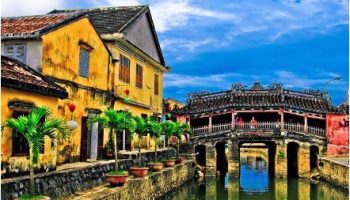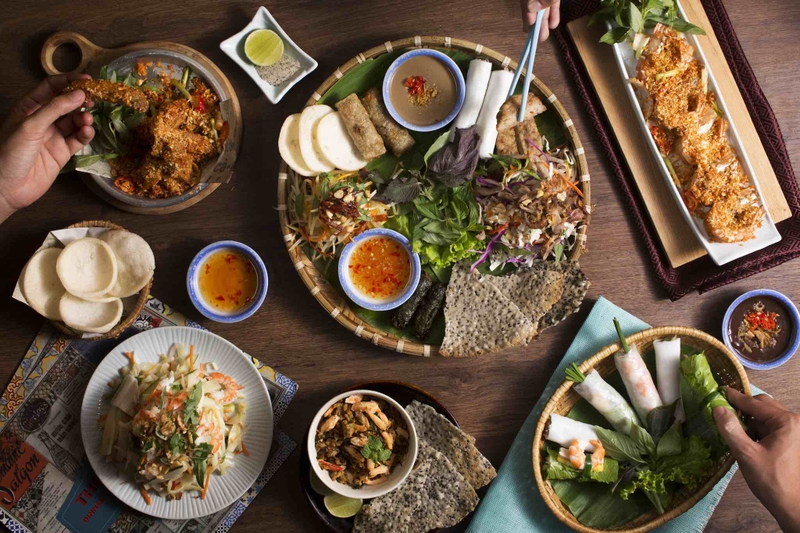
Southern Vietnamese Food: A Guide to Top Flavors
Vietnam charms many travelers with its stunning landscapes that are accompanied by a diversity of dishes. Among them, Southern Vietnamese food stands out for its bold, sweet, tropical ingredients that reflect rich cultural influences. Delve into the unique characteristics, its differences from other regions, and highlights of must-try dishes of Southern Vietnamese food.
Table of Contents
ToggleCharacteristics of Southern Vietnamese Food

Southern Vietnamese food’s allure lies in its generous use of ingredients and a fondness for sweet and bold flavors. Those flavors are well-blended fresh ingredients, usually made hot by order, and of course, for its convenience and availability at any time of the day. Here are some of its defining features:
Flavor Profile
- Sweetness: Southern Vietnamese dishes often tend to be sweeter than other regions, featuring sweetness from sugar, coconut milk, or tropical fruits like durian, mango, and pineapple.
- Freshness: Herbs such as lemongrass, mint, and basil are commonly used and usually favored for their refreshing aroma and taste. Other uncommon vegetables such as Bitter Melons, Lotus Stem, or Taro Stems and Leaves,… offer some unique taste.
- Tropical Ingredients: Thanks to the Mekong Delta’s water line, dishes with seafood, tropical, and seasonal ingredients are expected to be incorporated.
Cooking Techniques
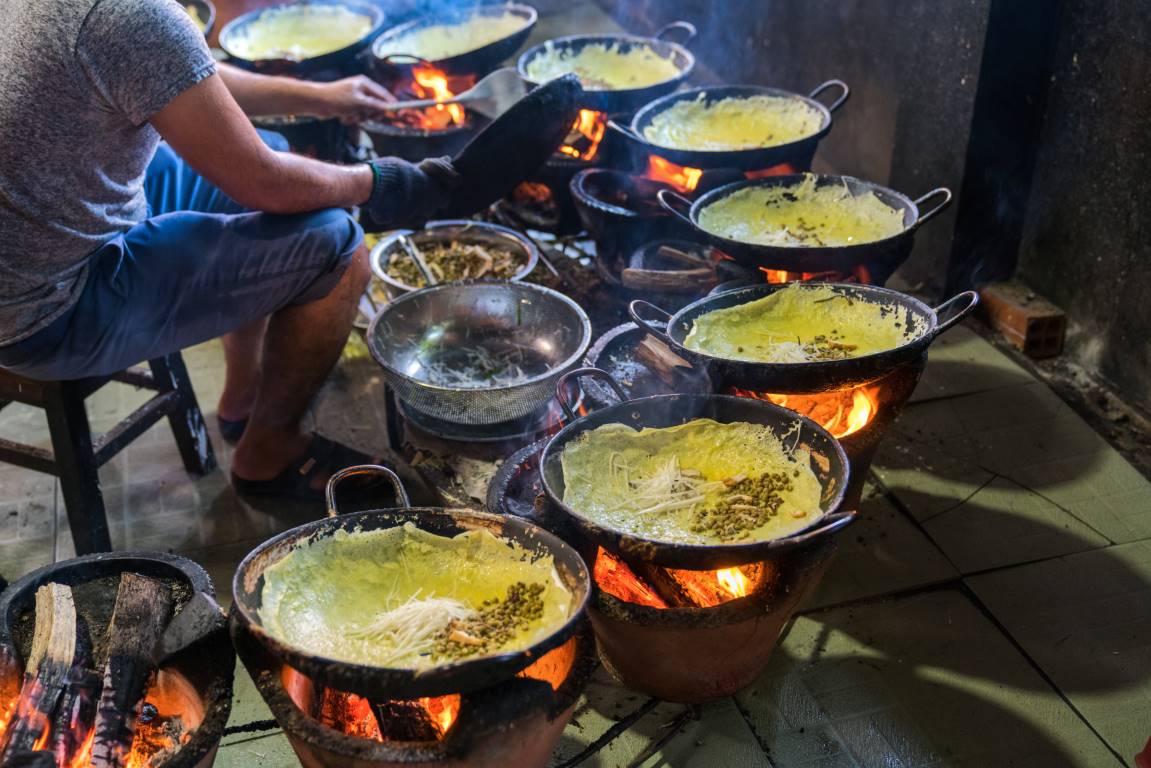
Grilling
Many dishes are made using this technique, showcasing the smoky, slightly burned flavors that are done over charcoal for added depth. It is a method that showcases the art of balancing open flames just enough to have the perfect slightly charred edges and unique smoky aroma.
Simmering/Braising
This method relies on slow shimmering or braising to develop a rich and concentrated taste. Through this process, the ingredients absorb the seasonings fully, creating a balanced flavor. Many renowned Southern family dishes use this technique.
Dry-Frying
This technique is called “rang” and is a type of technique that requires little to no oil, relying only on heat to draw out the natural flavors of the ingredients. To prevent burning, consistent stirring or tossing is required to ensure even cooking and caramelization.
Meat-stuffing
Ingredients like bitter melon, tofu, squid, or betel leaves are hollowed out, slit, or wrapped to hold the meat securely. Then they are fried or grilled as a final step to tighten all the ingredients together.
Steaming
It is a healthier and faster cooking technique with steamed fish in foil paper or dumplings are some highlights using this method. Some sweet dessert dishes are wrapped in banana leaves for that subtle earthy flavor.
Cultural Influences
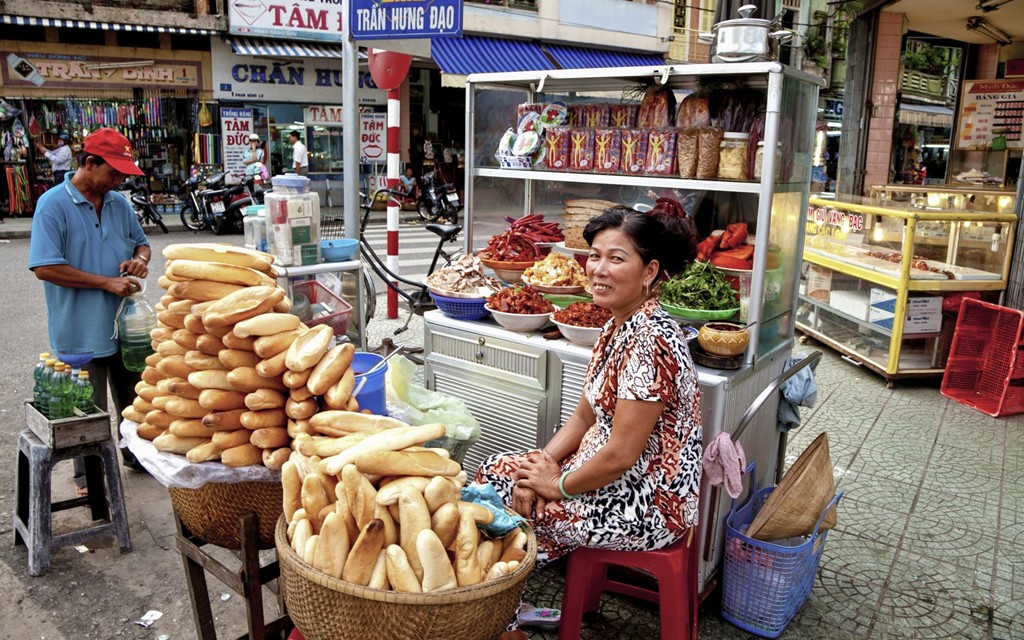 Southern Vietnamese cuisine illuminates the elegant blends of the cultural influences of Khmer, Cham, and even Western cuisines. The Khmer influence can be seen through the use of spices, while Cham cuisine inspires spices like turmeric. Influences during the colonial period were also reflected through dishes like Banh Mi or Vietnamese-style Beef Steak.
Southern Vietnamese cuisine illuminates the elegant blends of the cultural influences of Khmer, Cham, and even Western cuisines. The Khmer influence can be seen through the use of spices, while Cham cuisine inspires spices like turmeric. Influences during the colonial period were also reflected through dishes like Banh Mi or Vietnamese-style Beef Steak.
Meals are often served family-style everywhere, not just in households. The culture of street food provides people the opportunity to enjoy the meal in a closed but private seat, fostering a sense of connection, togetherness, and community.
Comparison with Other Regions of Vietnam
The beauty of a culinary journey in Vietnam is in its expansion of one flavor into countless types of dishes. And significantly so, from region to region, each offering its unique culinary identity. Here’s a quick breakdown of what to expect in different regions.
Read more: Vietnamese Cuisine: The Differences in Cuisine Across the Three Regions North – Central – South
Northern Vietnamese Cuisine
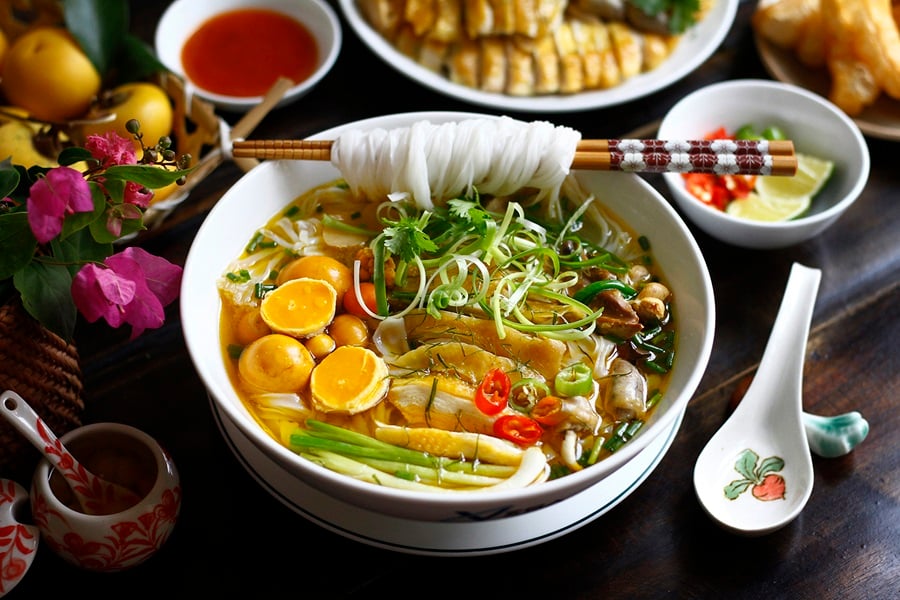
- Known for its light, balanced, subtle flavors, and the use of minimal spices. Pho is a prime example. Northern dishes are crafted to maintain proportional allure in taste and presentation.
- Fewer spices are used, with a focus on the natural taste of the ingredients. This is key to ensuring a balanced dish.
Read more about the Hanoi cuisine – The northern capital of Vietnam
Central Vietnamese Cuisine
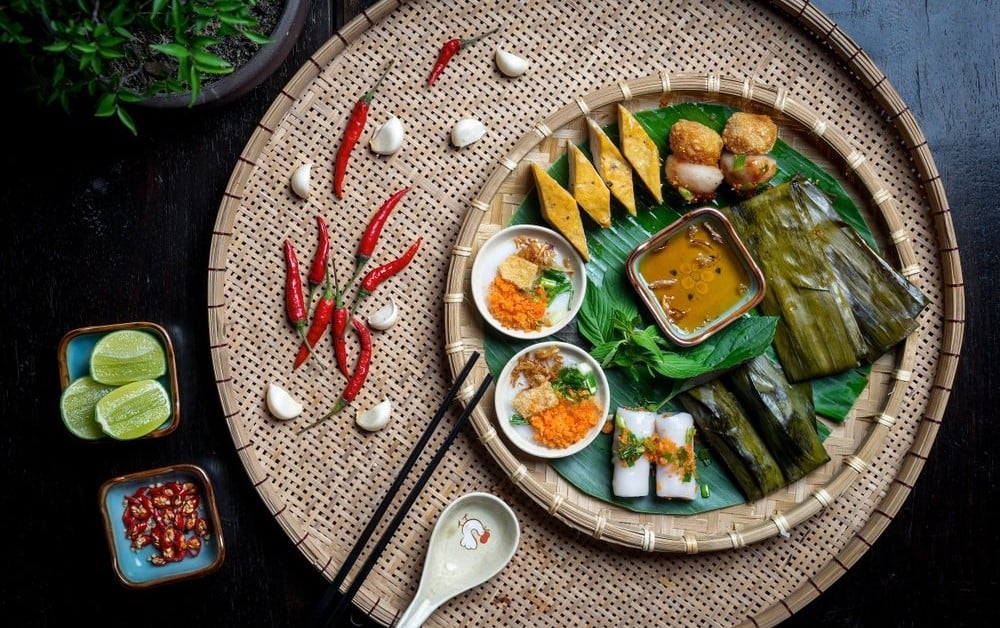
- Renowned for its spiciness and complex presentation, influenced by royal culinary traditions. Imperial cities like Hue or Hoi An are prime examples that showcase a blend of sophistication and meticulous attention to detail.
- Spiciness is what defines this region’s culinary charm. The liberal use of chili peppers, and garlic with fermented shrimp paste creates rich and dynamic flavors.
- Vibrant presentation with uses of colors and intricate details making it a true divine legacy of history and tradition.
Read more about Central Vietnam cuisine for a deeper dive into this wonder
Top Southern Vietnamese Dishes Categorized by Flavor
There are tasteful dishes for any flavor you desire. And even options for a smart blend in between, perfect for an adventurous culinary journey. Each bite is a journey to the Southern Vietnamese region’s tropical climate, cultural influences, and love for fresh ingredients.
1. Sweet
Chè (Sweet Soups)
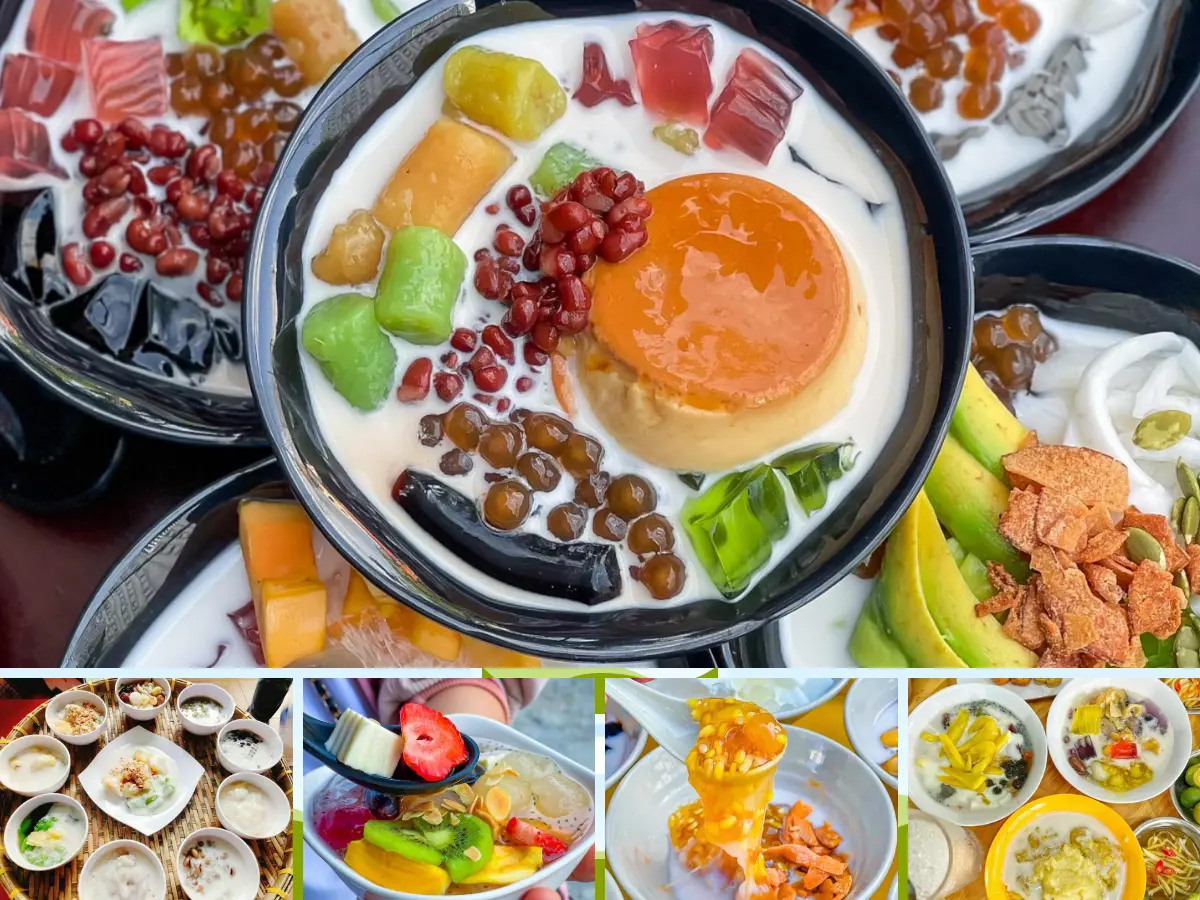 In Vietnam, there is this saying that summer is incomplete without Che. Indeed, this dessert soup is a quintessential part of Vietnamese cuisine, with many variations to satisfy any sweet tooth. Mostly includes ingredients like red or black beans, gelatine jellies, and tropical fruits like jackfruit, mango, durian, and coconut milk. It is a dish to be enjoyed when you seek that refreshing and indulgent sweetness. Popular variations include Chè Ba Màu (three-color dessert) and Chè Chuối (banana in coconut milk), offering a fun mix of textures and flavors.
In Vietnam, there is this saying that summer is incomplete without Che. Indeed, this dessert soup is a quintessential part of Vietnamese cuisine, with many variations to satisfy any sweet tooth. Mostly includes ingredients like red or black beans, gelatine jellies, and tropical fruits like jackfruit, mango, durian, and coconut milk. It is a dish to be enjoyed when you seek that refreshing and indulgent sweetness. Popular variations include Chè Ba Màu (three-color dessert) and Chè Chuối (banana in coconut milk), offering a fun mix of textures and flavors.
Bánh Cam (Sesame Balls)
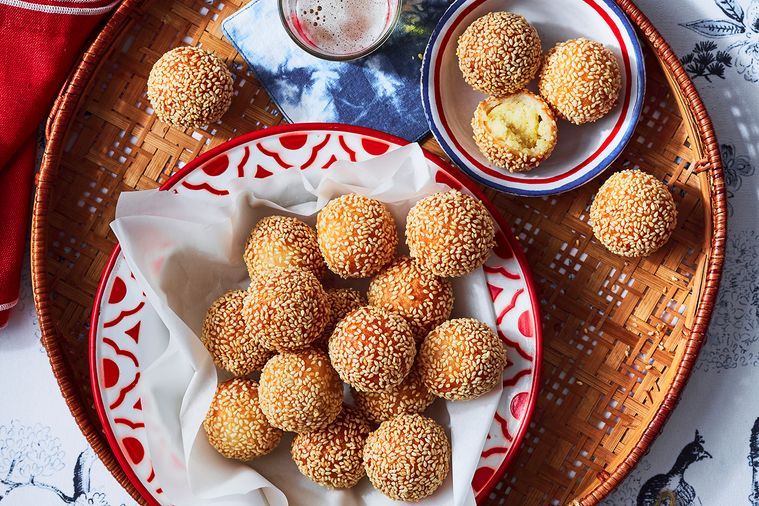 Baby palm-sized desserts filled with sweet mung bean paste, fried, and then coated with sesame seeds. These crispy, golden brown pastries are a heaven of flavor. In addition, their crunchy exterior gives way to a soft, sweet center, providing a delightful contrast and making them a must-try Southern Vietnamese snack.
Baby palm-sized desserts filled with sweet mung bean paste, fried, and then coated with sesame seeds. These crispy, golden brown pastries are a heaven of flavor. In addition, their crunchy exterior gives way to a soft, sweet center, providing a delightful contrast and making them a must-try Southern Vietnamese snack.
Bánh Da Lợn (Pig Skin Cake)
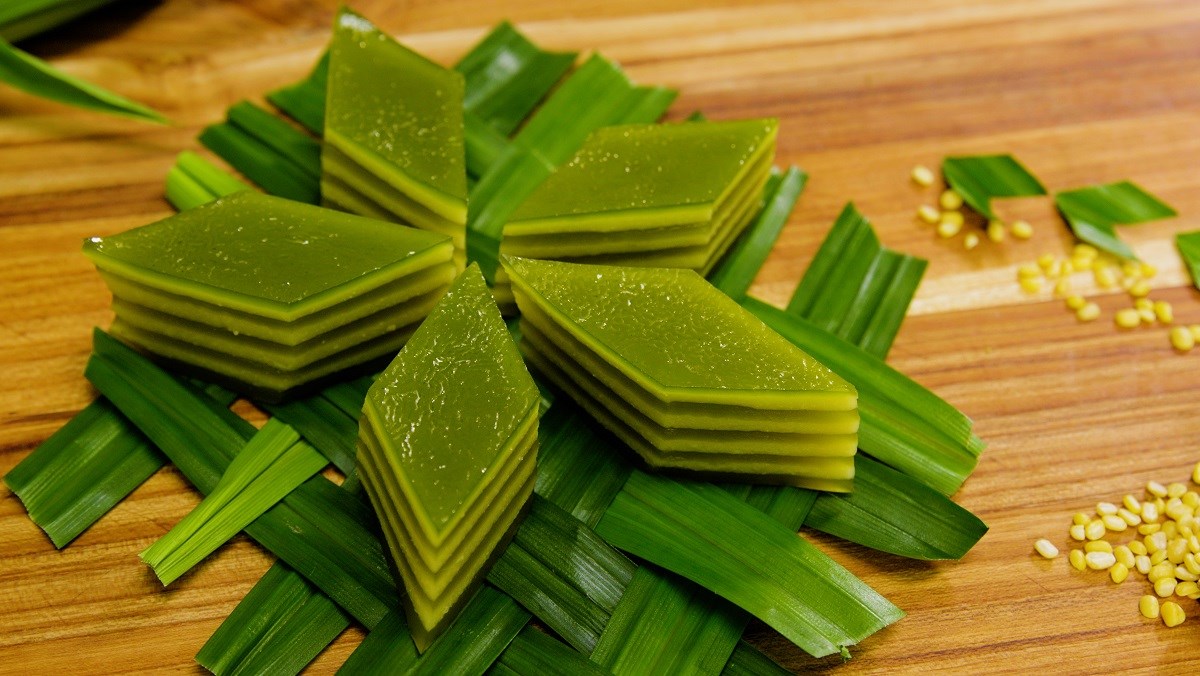 This is another significant traditional Vietnamese dessert, often found in the southern regions, particularly in Ho Chi Minh City (Saigon). Its name translates to “pig skin cake” in English but it has nothing to do with actual pig skin. Instead, the name derives from the smooth and layered appearance of the cake, which is reminiscent of the texture of pig skin. Because of its vibrant colors, delicate texture, and unique taste, it is most often used to celebrate special occasions like family gatherings or the lunar new year.
This is another significant traditional Vietnamese dessert, often found in the southern regions, particularly in Ho Chi Minh City (Saigon). Its name translates to “pig skin cake” in English but it has nothing to do with actual pig skin. Instead, the name derives from the smooth and layered appearance of the cake, which is reminiscent of the texture of pig skin. Because of its vibrant colors, delicate texture, and unique taste, it is most often used to celebrate special occasions like family gatherings or the lunar new year.
2. Sour
Canh Chua (Sour Soup)
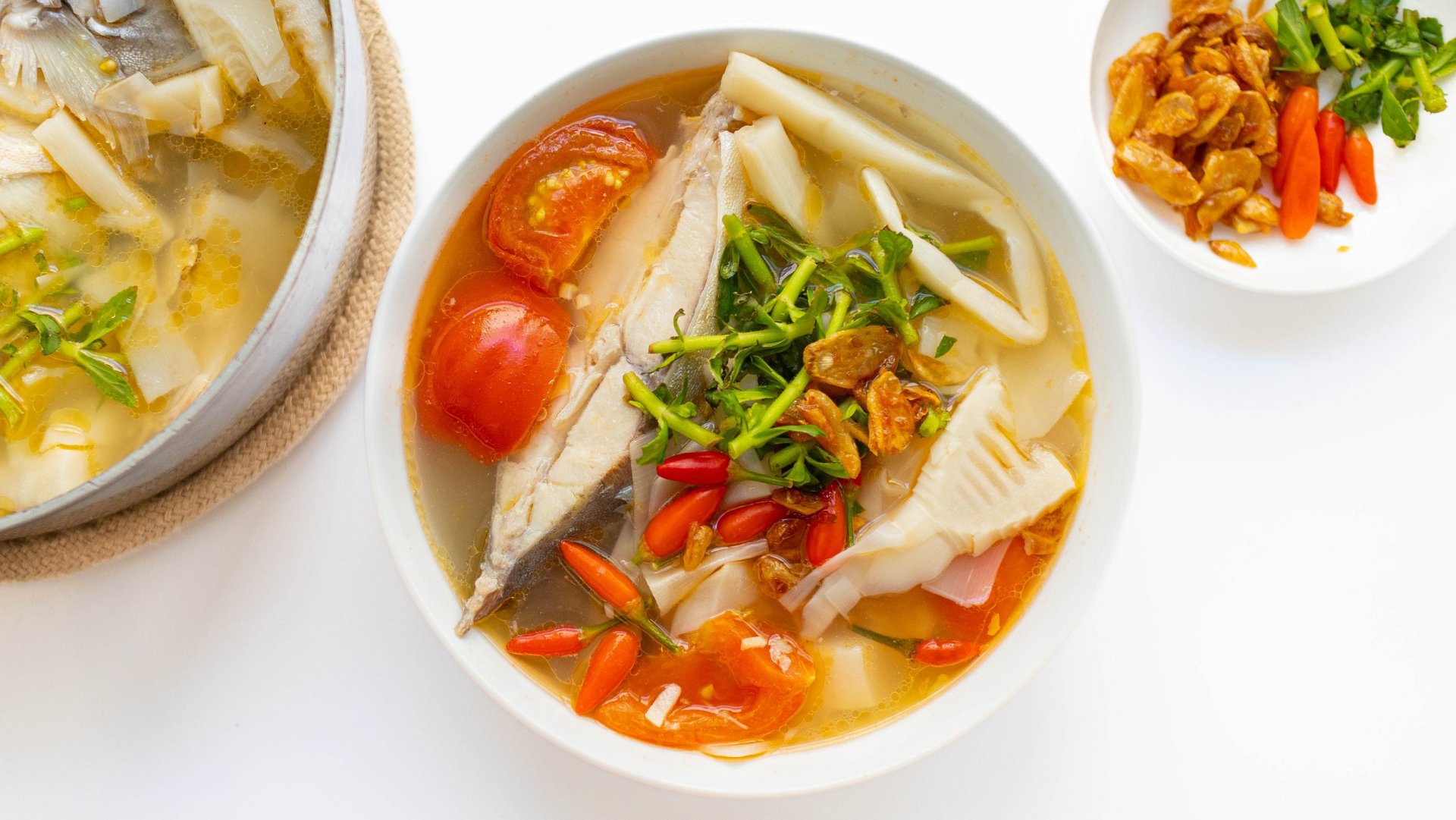 Have a taste and feel your body warm up and awake with Canh Chua – a tamarind-based soup that blends the tangy flavor of tamarind with the sweetness of pineapple, tomatoes, and fresh herbs. Typically made with fish, this soup is a gateway of sour and sweet, often served with rice and other side dishes to balance all the flavors.
Have a taste and feel your body warm up and awake with Canh Chua – a tamarind-based soup that blends the tangy flavor of tamarind with the sweetness of pineapple, tomatoes, and fresh herbs. Typically made with fish, this soup is a gateway of sour and sweet, often served with rice and other side dishes to balance all the flavors.
Gỏi Xoài (Mango Salad)
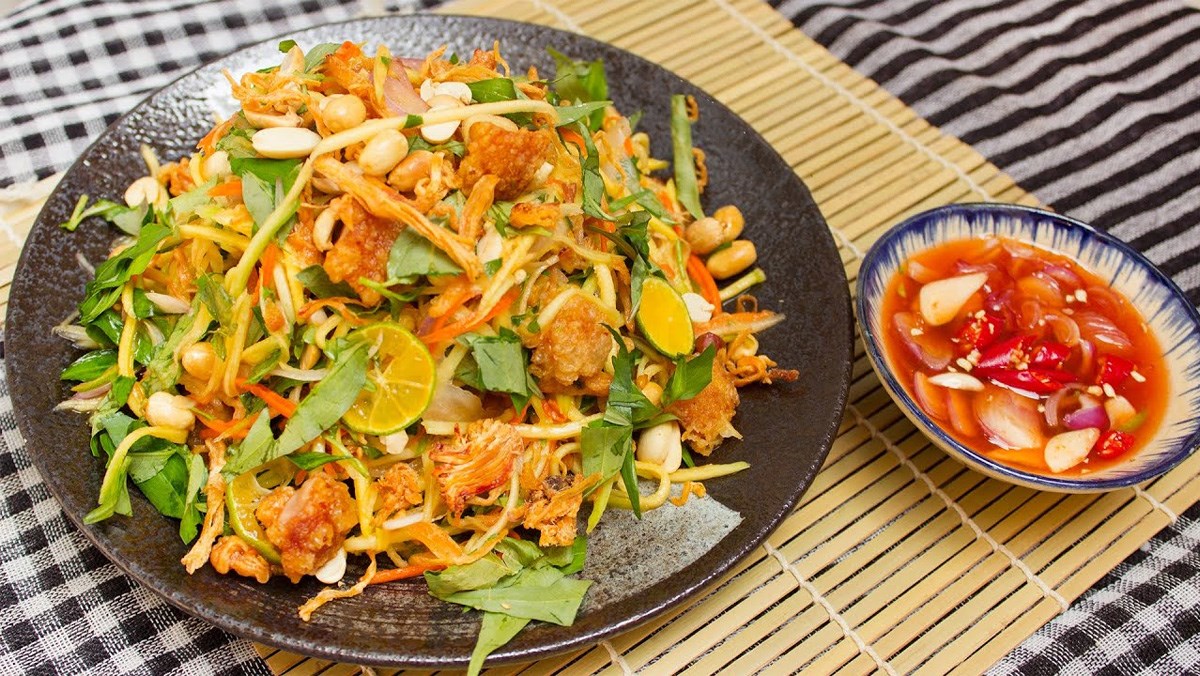 This zesty salad is made of shredded green mango, offering a tart base. Then it is complemented by peanuts, fresh herbs, and a tangy fish sauce dressing. As a cherry on top, the dish is enhanced with chili for that extra kick, making an enjoyable dish that best illuminates sour with spicy elements.
This zesty salad is made of shredded green mango, offering a tart base. Then it is complemented by peanuts, fresh herbs, and a tangy fish sauce dressing. As a cherry on top, the dish is enhanced with chili for that extra kick, making an enjoyable dish that best illuminates sour with spicy elements.
Gỏi Cuốn (Fresh Spring Rolls)
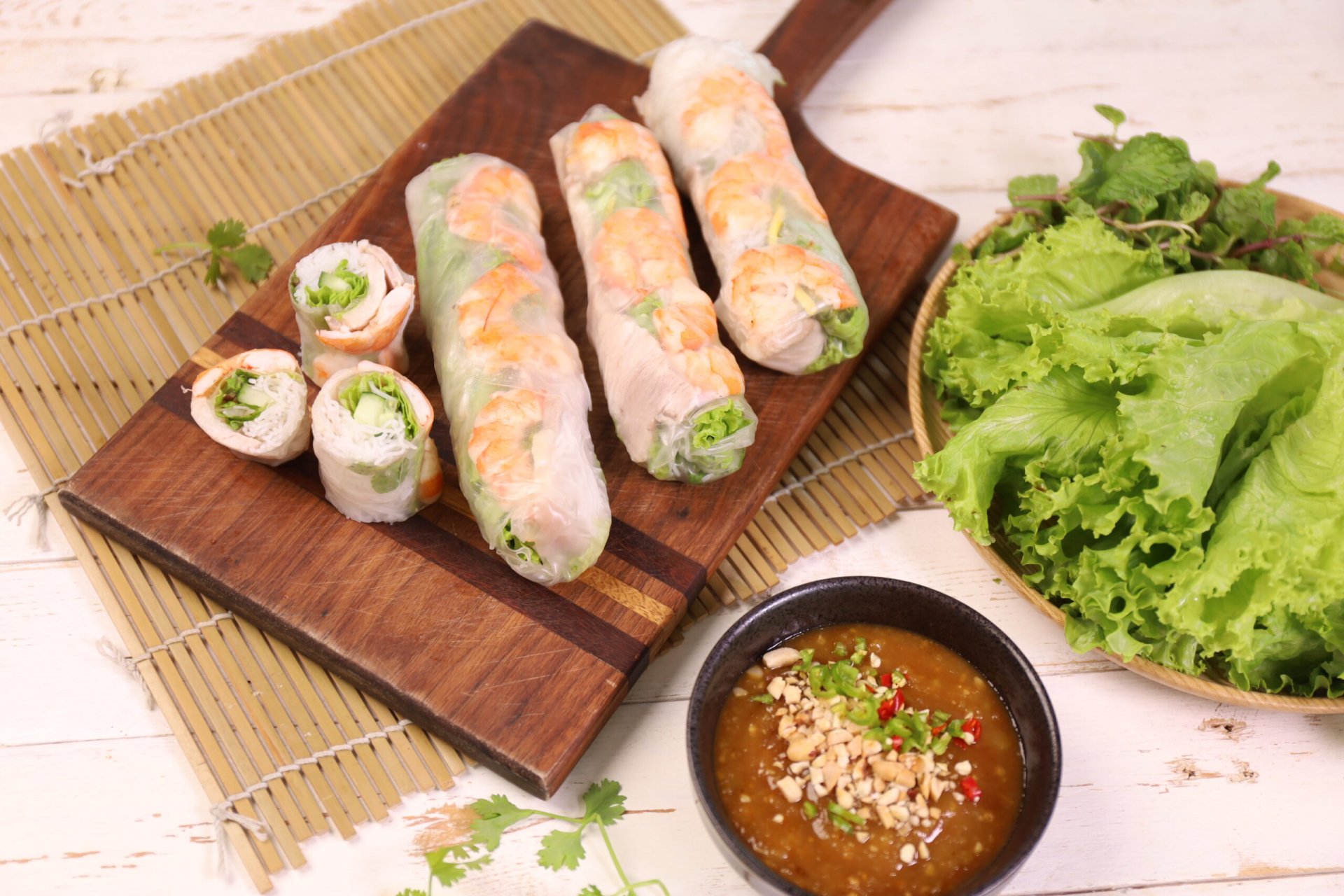 Gỏi Cuốn is a light, healthy, and hearty meal that is filled with shrimp, pork, vermicelli noodles, and fresh vegetables, wrapped in delicate soft rice paper. It is elevated by the accompanying dipping sauce, made from a combination of chilis, fish sauce, and lime, adding that needed a sour kick.
Gỏi Cuốn is a light, healthy, and hearty meal that is filled with shrimp, pork, vermicelli noodles, and fresh vegetables, wrapped in delicate soft rice paper. It is elevated by the accompanying dipping sauce, made from a combination of chilis, fish sauce, and lime, adding that needed a sour kick.
3. Spicy
Cá Kho Tộ (Caramelized Fish in Clay Pot)
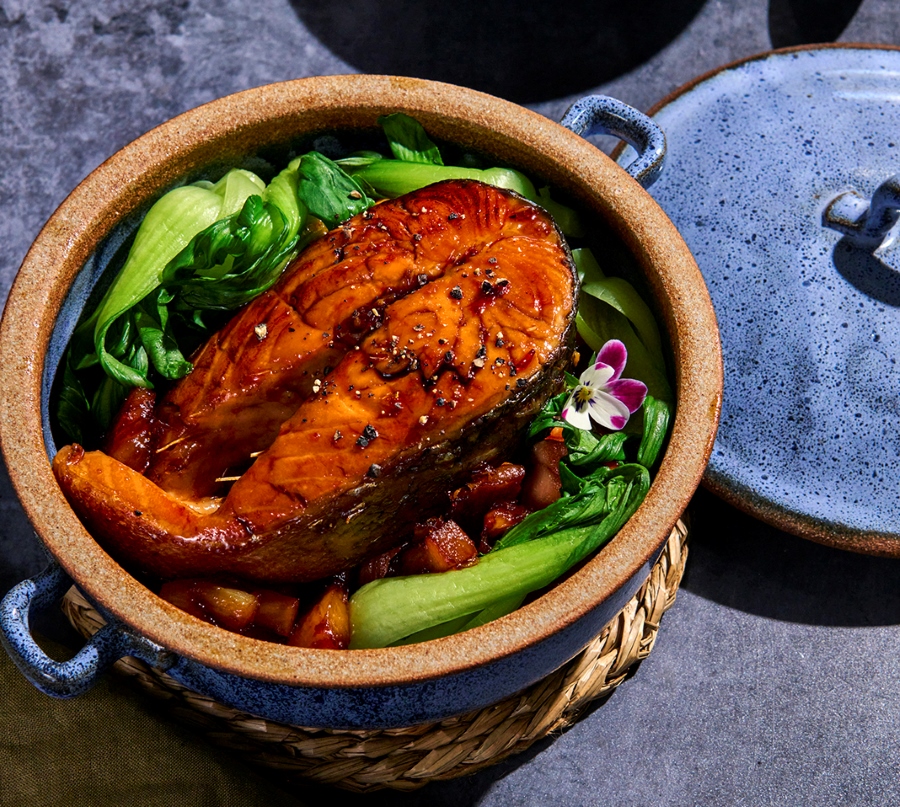 Through the art of simmering or braising, a type of fish, the most popular type is the catfish, is simmered in a clay pot with a caramelized sauce that includes fish sauce, sugar, and other spices. In this dish, the fish lovingly absorbs the rich, sweet, and savory flavors, while chili and garlic add even more depth. Served with steamed rice and other side vegetable dishes, this is a comforting dish for many local Vietnamese.
Through the art of simmering or braising, a type of fish, the most popular type is the catfish, is simmered in a clay pot with a caramelized sauce that includes fish sauce, sugar, and other spices. In this dish, the fish lovingly absorbs the rich, sweet, and savory flavors, while chili and garlic add even more depth. Served with steamed rice and other side vegetable dishes, this is a comforting dish for many local Vietnamese.
Bún Mắm (Fermented Fish Soup)
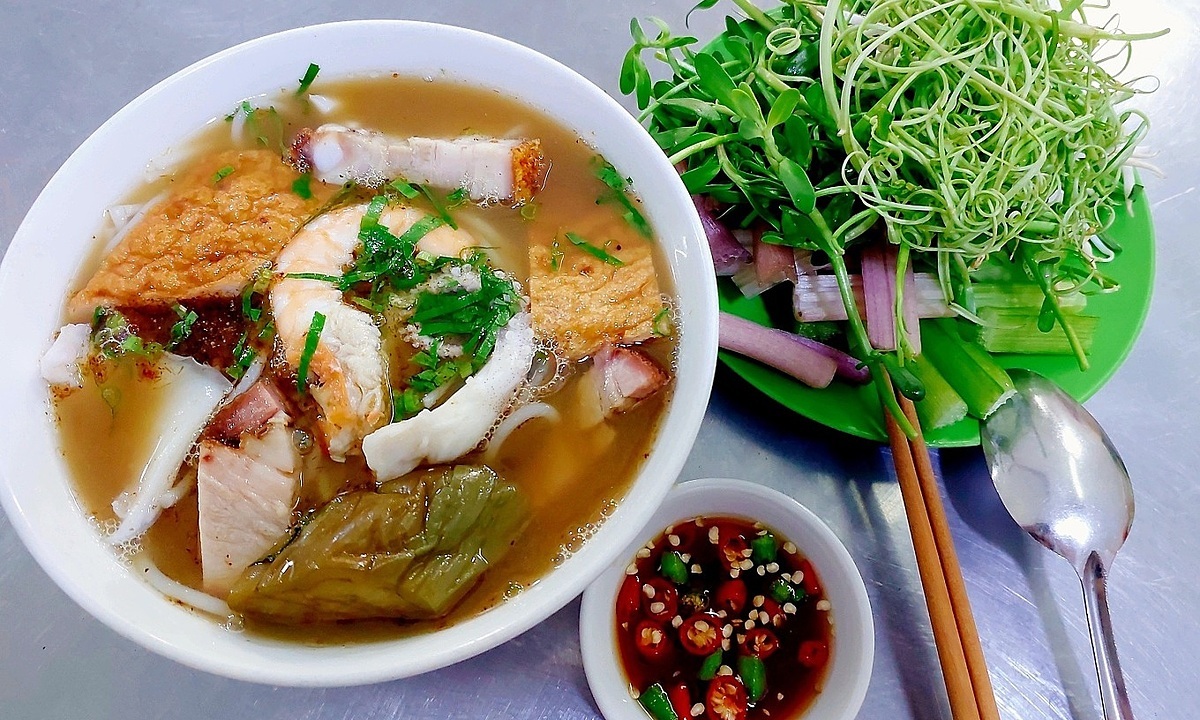 Rich with fermented fish broth, Bun Mam is a hearty noodle soup with various toppings. It can include seafood, fresh veggies like eggplant and okra for added texture, and fresh herbs for that freshness. Enjoy it with chili, the dish is a testament to a bold and flavorful dish.
Rich with fermented fish broth, Bun Mam is a hearty noodle soup with various toppings. It can include seafood, fresh veggies like eggplant and okra for added texture, and fresh herbs for that freshness. Enjoy it with chili, the dish is a testament to a bold and flavorful dish.
Bánh Xèo (Savory Pancakes)
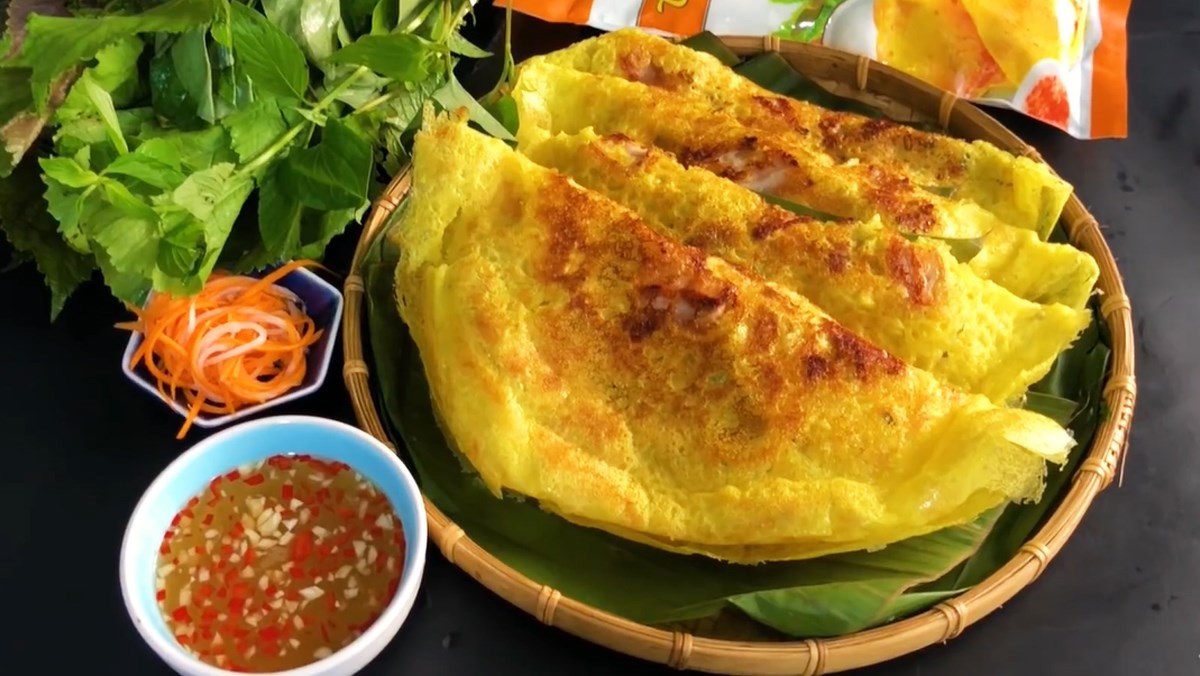 Blended between sweet, spicy, and sour, these crispy, golden pancakes are a classic in Southern Vietnamese food. It is made with a batter of rice flour and coconut milk, then fully stuffed with shrimp, pork, and bean sprouts. An aromatic fish sauce as a dipping sauce adds to the balance of harmony.
Blended between sweet, spicy, and sour, these crispy, golden pancakes are a classic in Southern Vietnamese food. It is made with a batter of rice flour and coconut milk, then fully stuffed with shrimp, pork, and bean sprouts. An aromatic fish sauce as a dipping sauce adds to the balance of harmony.
Top Southern Vietnamese Dishes Categorized by Meal Type
Vietnamese people have interesting eating habits with various meal options accompanying their preferences. Here, food is not only a necessity, but it is a joy, a break from the hustling of life and so you can access and enjoy meals at vendors anywhere in the street. Here’s our recommendation for a type of dish during a specific time of day
1. Breakfast
Bánh Mì (Vietnamese Sandwich)
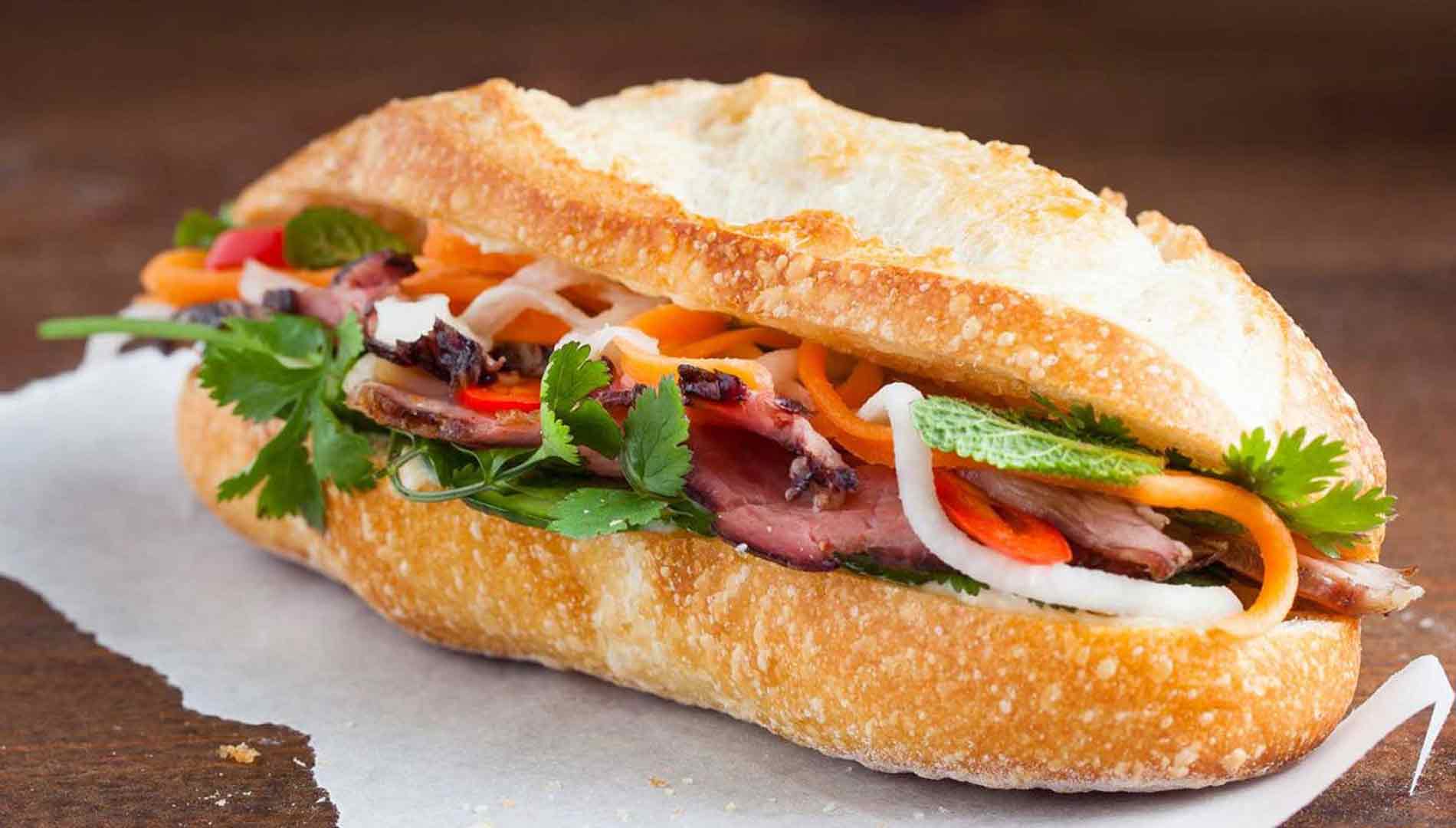 Immersed from the French colonial period, Bánh Mì is a popular breakfast choice in Southern Vietnam and also across the country. The exquisiteness of this dish lies in its various toppings, such as grilled pork, chicken, mushroom, pickled vegetables to vegan options, there’s something for everybody to enjoy. Paired with a glass of soy milk or coffee, Banh Mi is a perfect breakfast option.
Immersed from the French colonial period, Bánh Mì is a popular breakfast choice in Southern Vietnam and also across the country. The exquisiteness of this dish lies in its various toppings, such as grilled pork, chicken, mushroom, pickled vegetables to vegan options, there’s something for everybody to enjoy. Paired with a glass of soy milk or coffee, Banh Mi is a perfect breakfast option.
Hủ Tiếu (Rice Noodle Soup)
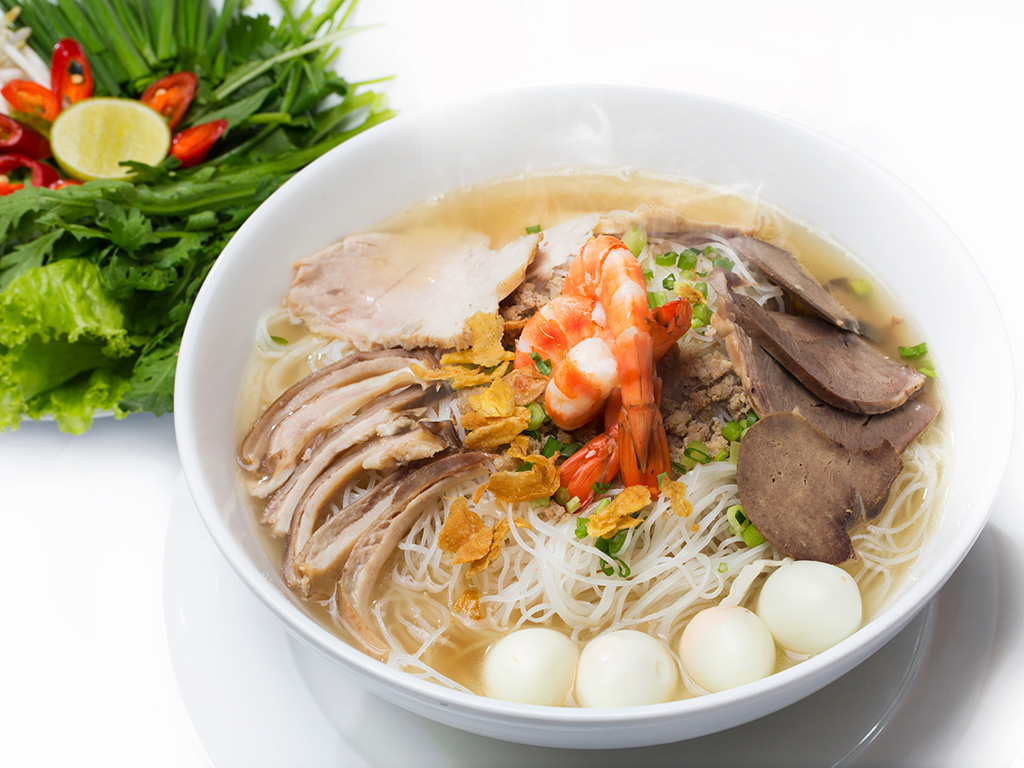 Another beloved Southern Vietnamese food, Hủ Tiếu is a delicious dish that provides you with that warm morning cozy feel. It has a rice noodle base that can be served with a variety of proteins, such as pork, shrimp, quail eggs, and vegetables on the side with broth that is light but aromatic. Hủ Tiếu is a comforting but filling dish that provides the energy needed for a busy day ahead.
Another beloved Southern Vietnamese food, Hủ Tiếu is a delicious dish that provides you with that warm morning cozy feel. It has a rice noodle base that can be served with a variety of proteins, such as pork, shrimp, quail eggs, and vegetables on the side with broth that is light but aromatic. Hủ Tiếu is a comforting but filling dish that provides the energy needed for a busy day ahead.
2. Lunch
Cơm Tam (Broken Rice)
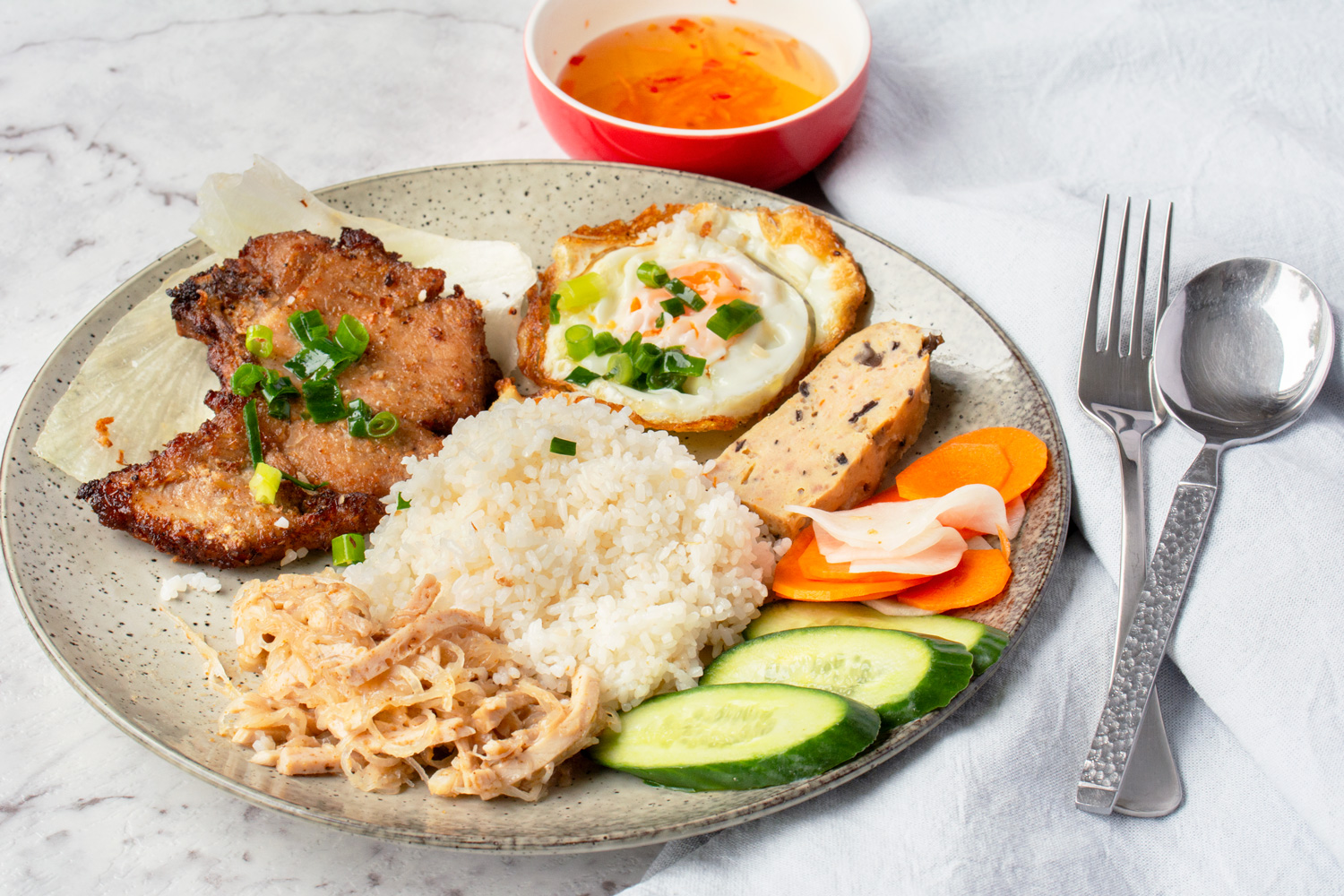 Cơm Tấm is a comforting and hearty dish made with broken rice, grilled pork chops, fried egg, and pickled vegetables. The tender, smoky pork over charcoal is in balance with the soft, fragrant rice complemented by the tangy crunch of the pickled vegetables, creating a party of flavors. It is a satisfying, filling, and commonly found serving fresh and piping hot.
Cơm Tấm is a comforting and hearty dish made with broken rice, grilled pork chops, fried egg, and pickled vegetables. The tender, smoky pork over charcoal is in balance with the soft, fragrant rice complemented by the tangy crunch of the pickled vegetables, creating a party of flavors. It is a satisfying, filling, and commonly found serving fresh and piping hot.
Bánh Canh (Thick Noodle Soup)
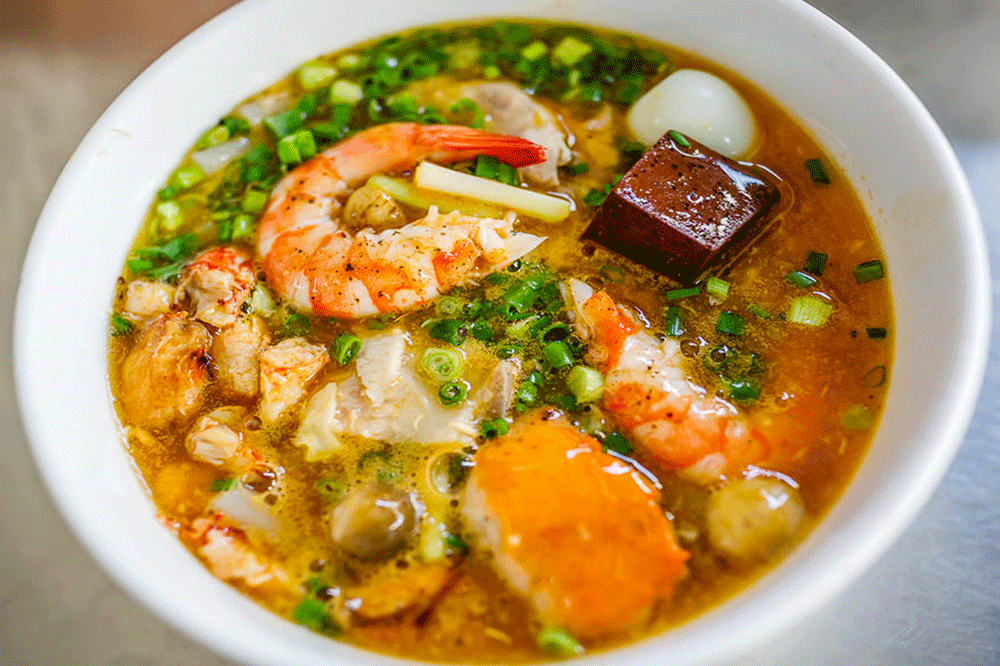 Bánh Canh noodle is made with tapioca or rice and has a thicker texture. It includes classic proteins like seafood, pork, or chicken with herbs and chillies for a comforting but exciting dish. Its soup is the most sought-after known for its rich, savory broth made from pork or fish bones, which is simmered for hours to extract deep flavors.
Bánh Canh noodle is made with tapioca or rice and has a thicker texture. It includes classic proteins like seafood, pork, or chicken with herbs and chillies for a comforting but exciting dish. Its soup is the most sought-after known for its rich, savory broth made from pork or fish bones, which is simmered for hours to extract deep flavors.
3. Dinner
Lẩu Mắm (Mam Hotpot)
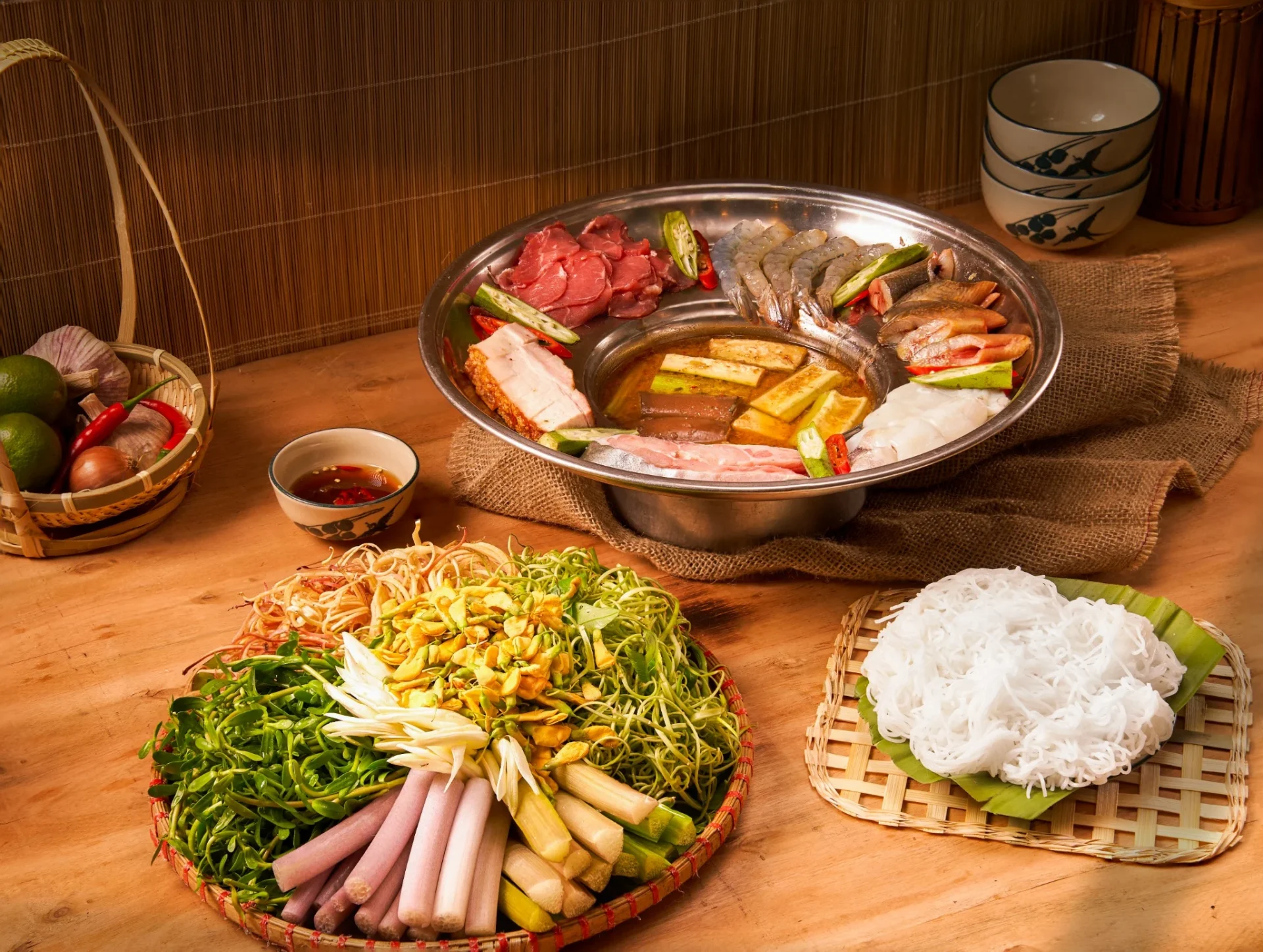 This is a traditional and beloved hot pot dish from the Mekong Delta region in Southern Vietnam. Known for its rich, bold, and distinctive flavor, Lẩu Mắm is made with fermented fish (known as “mắm” in Vietnamese), which gives the broth its unique taste. This dish is a perfect example of the Southern Vietnamese preference for using local, fresh ingredients and the region’s love for fermented foods.
This is a traditional and beloved hot pot dish from the Mekong Delta region in Southern Vietnam. Known for its rich, bold, and distinctive flavor, Lẩu Mắm is made with fermented fish (known as “mắm” in Vietnamese), which gives the broth its unique taste. This dish is a perfect example of the Southern Vietnamese preference for using local, fresh ingredients and the region’s love for fermented foods.
Phá Lấu Sài Gòn (Beef Stew Sai Gon)
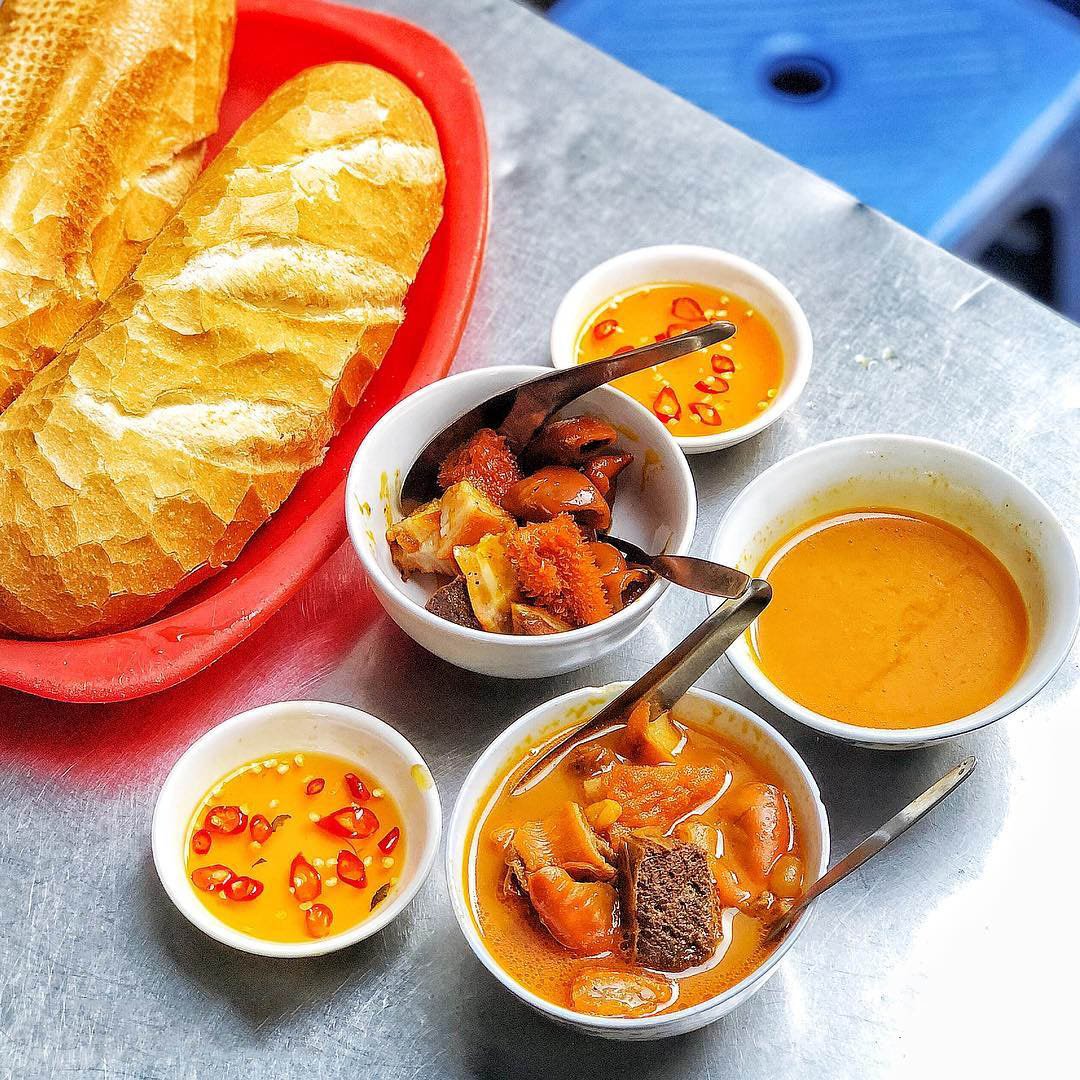 Ho Chi Minh City (formerly Saigon) is beloved for Pha Lau – a rich, savory, and aromatic beef stew dish. Infused with Chinese-Vietnamese cuisine, this dish portrays a simple but tasty dish, often enjoyed as a late-night snack or casual meal, particularly in the bustling streets of the city. It is embedded in the daily life of the people, so tasting it is like stepping into the true local life.
Ho Chi Minh City (formerly Saigon) is beloved for Pha Lau – a rich, savory, and aromatic beef stew dish. Infused with Chinese-Vietnamese cuisine, this dish portrays a simple but tasty dish, often enjoyed as a late-night snack or casual meal, particularly in the bustling streets of the city. It is embedded in the daily life of the people, so tasting it is like stepping into the true local life.
Where to Experience Southern Vietnamese Food
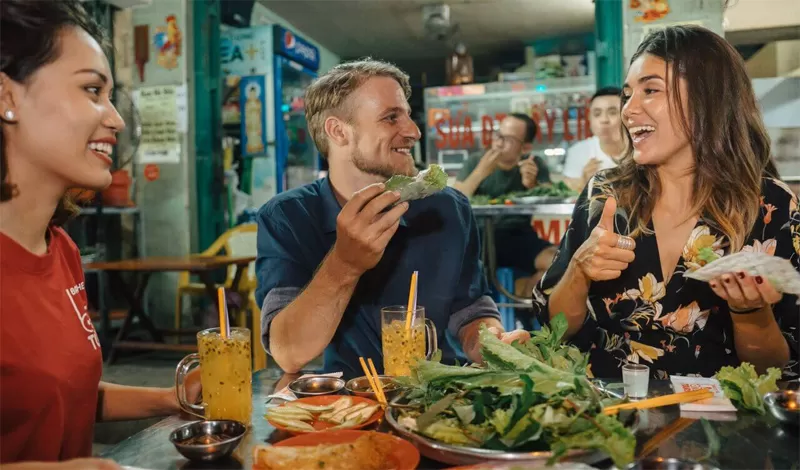 It is not hard to find a place to enjoy Southern Vietnamese food. Classic places such as the local markets of Ben Thanh Market in Ho Chi Minh City invite you to indulge in a fun culinary adventure. Additionally, choosing family-run eateries will offer you the most genuine flavors.
It is not hard to find a place to enjoy Southern Vietnamese food. Classic places such as the local markets of Ben Thanh Market in Ho Chi Minh City invite you to indulge in a fun culinary adventure. Additionally, choosing family-run eateries will offer you the most genuine flavors.
Many curated tour journeys offer an all-inclusive service that combines food, exercise, and comfort. A notable choice is the SJourney train where you get to taste delightful dishes made by renowned and native chefs. There’s no better way to experience the authentic taste than to enjoy it with the ever-changing landscapes of the region.
Southern Vietnamese food – Start the culinary adventure today!
Enjoying Southern Vietnamese food is a journey of exploring the region’s rich culture and diversity of tastes. There’s something new and unique for every palate. Whether you are savoring a tangy bowl of Canh Chua or a quick sweet and wholesome snack of Banh Cam, the cuisine of Southern Vietnam promises a fulfilling culinary adventure.







